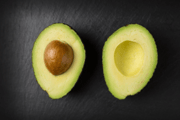More food waste tips and tricks to reduce grocery expenses: "Never throw out anything ever again!"
- Replies 6
To get the most bang for our buck, we're always looking for new tips and tricks. There's no doubt that, with high-interest rates and rising costs of living, we all need to make every dollar count.
With that in mind, being aware of every possible method for reducing waste can help you save a significant amount of money on your food and household supplies.
The challenge of the day is to never throw away anything that can still be put to some kind of good use!
Reusing any items that were previously discarded is one of the most effective ways to cut down on waste and save money, according to Jane de Graaff from 9Honey.
If you have veggies or other items in the fridge that need to be used up quickly, you can just put them in a container in the fridge. Take this container with you when you cook to make sure you use up things that need to be thrown away.
The following are some examples of common food waste that can be reused and put to other purposes:

If you know every way to cut down on waste, you can save a lot of money on groceries. Credit: 9Honey.
Old bread - Bread that has gone stale is one of the greatest money wasters, but there are numerous uses for it.
It can be used to thicken soups and stews like an Italian ribollita, or it can be soaked in milk and then blitzed with roasted garlic or fish roe and olive oil to make a velvety dip.
Baked croutons or even crumbled panzanella can be made by breaking up the bread into small pieces and baking or toasting them until they are crisp and flavourful. You can also do this with bread crusts!
Chicken bones - If you purchase or prepare a roasted chicken, you should always save the bones and use them to make stock or soup.
Homemade stock is always better than a store-bought one because you can simply simmer the bones with a few leftover veggies. It saves money and is also an excellent way to use up leftover vegetables.
Corn cobs - "These guys are the flavour bomb you have been looking for," says Jane.
When you cut cooked corn off the cob the next time, save the cob and the water you used to cook the corn and use them to simmer in a soup. They make the dish more delicious while also contributing extra sweetness and nutrients.
The same is true for any cooking water that was used for your vegetables. You should save it and incorporate it into a stew, broth, or stock. In addition to the flavour, the stock will be super-rich in nutrients.
Veggie scraps - There are two different ways in which you can make use of any unused vegetables and their trimmings (aside from composting them, of course).
One way is to simply store all of the scraps in a container in the refrigerator. At the end of the week, you can use those scraps to make a flavorful soup or stew by simmering them together.
The second method is to take those scraps at the end of the week and blitz them in the food processor to a very fine chop. After that, pour in several tablespoons of salt and combine everything thoroughly.
This will result in a salty vegetable stock paste that you can add by the spoonful to anything you're cooking, from soups and casseroles to stews, in place of other stocks. It has an immediate flavour impact and can be stored for two months in the refrigerator without losing its quality.
Pasta odds and ends - In a jar, keep all the bits and pieces from pasta packets, bags of beans, and dried odds and ends that didn't quite get used but aren't enough for a meal on their own. You can throw all of these various ingredients into the next pot of soup that you make and give it some texture by adding some hearty pasta or beans.
Parmesan heels - If you're not familiar with the term, Parmesan heel refers to the 'knob' at the end of the parmesan that's too difficult to grate but still tastes delicious.
"Toss that into your next soup and simmer it down, it will soften right up and flavour the soup," says Jane.

The freezer can help you get a little more out of your food and save money at the same time. Credit: Jamie Oliver.
If you are unable to reuse the ingredients immediately, you can give them a new lease on life by placing them in the freezer. This will make them last slightly longer.
Yoghurt - Yoghurt can be frozen into cubes to be used as ice, which can then be added to a smoothie for a speedier preparation. It's a great way to save yoghurt that you're not using and to prepare for quick weekday breakfasts.
Fruit - Aside from yoghurt, you can also chop and freeze your fruit before it goes bad so that you can use it in smoothies later on in the future as needed. Bananas and berries are two foods that work particularly well with this method.
Herbs - "These are one of the biggest money wasters. We often buy a whole bunch and just don't get to it in time," says Jane.
You could make pesto out of them to preserve them for a longer period of time, but you could also finely chop them, add them to an ice cube tray along with some olive oil, and freeze them for later use in the frypan.
Did you know that many of the parts of vegetables that are often discarded after cooking can be used to grow new ones? Just look at how this guy grows his own vegetables from discarded cuttings!
Credit: Self Sufficient Me.
Do you have more food-saving tips and tricks to share with us, members? Let us know in the comments below!
With that in mind, being aware of every possible method for reducing waste can help you save a significant amount of money on your food and household supplies.
The challenge of the day is to never throw away anything that can still be put to some kind of good use!
Reusing any items that were previously discarded is one of the most effective ways to cut down on waste and save money, according to Jane de Graaff from 9Honey.
If you have veggies or other items in the fridge that need to be used up quickly, you can just put them in a container in the fridge. Take this container with you when you cook to make sure you use up things that need to be thrown away.
The following are some examples of common food waste that can be reused and put to other purposes:
If you know every way to cut down on waste, you can save a lot of money on groceries. Credit: 9Honey.
Old bread - Bread that has gone stale is one of the greatest money wasters, but there are numerous uses for it.
It can be used to thicken soups and stews like an Italian ribollita, or it can be soaked in milk and then blitzed with roasted garlic or fish roe and olive oil to make a velvety dip.
Baked croutons or even crumbled panzanella can be made by breaking up the bread into small pieces and baking or toasting them until they are crisp and flavourful. You can also do this with bread crusts!
Chicken bones - If you purchase or prepare a roasted chicken, you should always save the bones and use them to make stock or soup.
Homemade stock is always better than a store-bought one because you can simply simmer the bones with a few leftover veggies. It saves money and is also an excellent way to use up leftover vegetables.
Corn cobs - "These guys are the flavour bomb you have been looking for," says Jane.
When you cut cooked corn off the cob the next time, save the cob and the water you used to cook the corn and use them to simmer in a soup. They make the dish more delicious while also contributing extra sweetness and nutrients.
The same is true for any cooking water that was used for your vegetables. You should save it and incorporate it into a stew, broth, or stock. In addition to the flavour, the stock will be super-rich in nutrients.
Veggie scraps - There are two different ways in which you can make use of any unused vegetables and their trimmings (aside from composting them, of course).
One way is to simply store all of the scraps in a container in the refrigerator. At the end of the week, you can use those scraps to make a flavorful soup or stew by simmering them together.
The second method is to take those scraps at the end of the week and blitz them in the food processor to a very fine chop. After that, pour in several tablespoons of salt and combine everything thoroughly.
This will result in a salty vegetable stock paste that you can add by the spoonful to anything you're cooking, from soups and casseroles to stews, in place of other stocks. It has an immediate flavour impact and can be stored for two months in the refrigerator without losing its quality.
Pasta odds and ends - In a jar, keep all the bits and pieces from pasta packets, bags of beans, and dried odds and ends that didn't quite get used but aren't enough for a meal on their own. You can throw all of these various ingredients into the next pot of soup that you make and give it some texture by adding some hearty pasta or beans.
Parmesan heels - If you're not familiar with the term, Parmesan heel refers to the 'knob' at the end of the parmesan that's too difficult to grate but still tastes delicious.
"Toss that into your next soup and simmer it down, it will soften right up and flavour the soup," says Jane.
The freezer can help you get a little more out of your food and save money at the same time. Credit: Jamie Oliver.
If you are unable to reuse the ingredients immediately, you can give them a new lease on life by placing them in the freezer. This will make them last slightly longer.
Yoghurt - Yoghurt can be frozen into cubes to be used as ice, which can then be added to a smoothie for a speedier preparation. It's a great way to save yoghurt that you're not using and to prepare for quick weekday breakfasts.
Fruit - Aside from yoghurt, you can also chop and freeze your fruit before it goes bad so that you can use it in smoothies later on in the future as needed. Bananas and berries are two foods that work particularly well with this method.
Herbs - "These are one of the biggest money wasters. We often buy a whole bunch and just don't get to it in time," says Jane.
You could make pesto out of them to preserve them for a longer period of time, but you could also finely chop them, add them to an ice cube tray along with some olive oil, and freeze them for later use in the frypan.
Did you know that many of the parts of vegetables that are often discarded after cooking can be used to grow new ones? Just look at how this guy grows his own vegetables from discarded cuttings!
Credit: Self Sufficient Me.
Do you have more food-saving tips and tricks to share with us, members? Let us know in the comments below!







